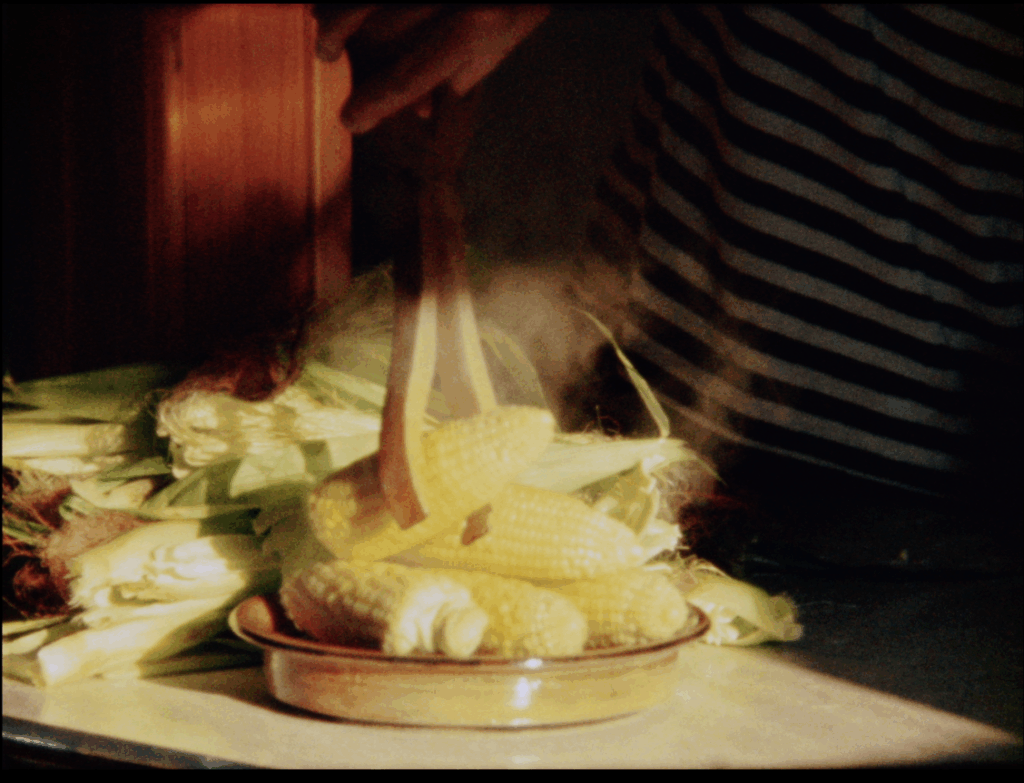
Corn (1970) by Larry Gottheim
Wednesday, November 5, 2025, 6:00 pm
Larry Gottheim: The Red Thread (Program One)
Introduction & Early Works
Larry Gottheim in person
Presented in association with the Roxie Theater
Admission: $15 General / $12 Cinematheque Members and Members of the Roxie
Event tickets here
Download Program Notes
“Early on, Gottheim […] challenged us to rethink our conventional experiences with filmgoing: basically, to start over by deepening and broadening our perception of what the elements of celluloid cinema were and how they could be used. Now, half a century later, his film Entanglement (2022) is a kind of meta-haiku that challenges us to work at comprehending, as best we can, the media-saturated world of the 21st century that we are all awash in.” (Scott MacDonald, from The Read Thread: Larry Gottheim and His Films)
Among the meanings of The Red Thread are the connections that run from one film to the next, and the threads tat run from the films to issues of biography, philosophy, psychology, film theory, social issues, ritual and ceremony. (Larry Gottheim)
Working in film since the late 1960s, the cinema of Larry Gottheim is an observational cinema, rewarding contemplation, stillness and active intellectual engagement and offering uncannily commonplace imagery rife with elusive metaphor and/or accumulating into densely immersive conceptual conundra. In Gottheim’s films, time slows, hesitates and seems to move in novel and non-linear directions, the circularity of experience a recurring aspect of the master filmmaker’s rich body of work. Gottheim’s recent book, The Red Thread: Larry Gottheim and His Films (published 2024 by Eyewash Books and the Film-Makers’ Cooperative) is a ruminative and musing career-spanning culmination, teasing out longitudinal threads and uncanny occurrences in the oeuvre, presenting the artists’ body of work as a multi-faceted whole, a throughline of thought and material-based philosophy.
In celebration of The Read Thread, Cinematheque is honored to present a three-program residency presenting selections from the artist’s vast body of work, from early single-shot films, still lifes and nature studies to the complex sound/image constructions of later work to the very recent films completed 2019–2024. This series is presented in partnership with the Roxie Theater, Gray Area and Shapeshifters Cinema with Larry Gottheim in person at all screenings. (Steve Polta)
Program 1 · Program 2 · Program 3
Program One: Introduction & Early Works
Wednesday, November 5 at 6pm
Roxie Theater, San Francisco
Cinematheque’s three-part series commences with an early evening interactive presentation of three of the artist’s iconic single-shot early works and the later, semi-autobiographical titular film The Red Thread, filmed in mid-1980s San Francisco.
SCREENING:
Corn (1970); 16mm screened as digital video, color, silent, 11 minutes. Fog Line (1970); 16mm screened as digital video, color, silent, 11 minutes. Harmonica (1971); 16mm screened as digital video, color, sound, 11 minutes. The Red Thread (1987); 16mm screened as digital video, color, sound, 17 minutes.
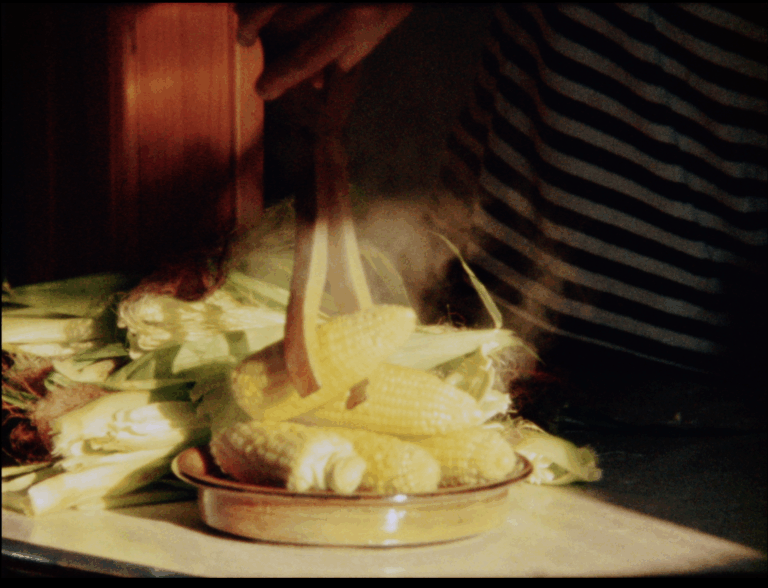
Corn (1970) by Larry Gottheim
This is one of the films that came out of a rejection of expressive camera work, sound, language, editing. I wanted to offer a rich experience of phenomena and associations that could come from a continuous moving image the length of a roll of film. The scene is a space of ceremony, of an offering. This is the world of my house in the country, of my marriage to a potter whose bowl represents her. She is the actor. There are actions that have to do with the transformation of ears of corn into sustenance. These actions take place within a space/time theater of slow continuous changes of light and shadow. There are long spaces where the viewer is free to look at various parts of the screen and, with the steam that rises from the cooked ears, into the very grains of the film itself. The sinuous dance of steam is a counterpart to the fog of Fog Line. The two films are joined. (Larry Gottheim)
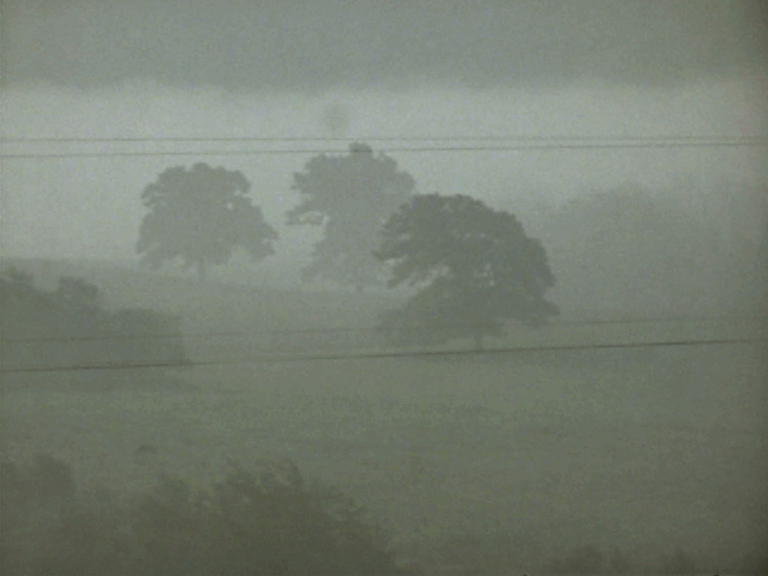
Fog Line (1970) by Larry Gottheim
The fog lifts on a scene. For an attentive viewer the mental fog could also lift. It doesn’t go from white to full clarity. It just shows a piece of time, a section of a process in the landscape and in the mind of the viewer. The entire image slowly changes, the sky, the ground, what’s at the edges. The main features are the three trees and the wires. The trees stand there, manifesting their being. They have a soft shape without outline. The lines of the wires are something else. They relate to drawing rather than painting, the controlling mind rather than the imagination. The implications of this contrast go right through my work. There is something ethereal, ghostly. The viewer is invited to explore the screen, looking here and there, each person following a different path. Those whose path includes entering into the very emulsion that makes up the image are rewarded by the sight of ghost horses, the first animals in my films. (Larry Gottheim)
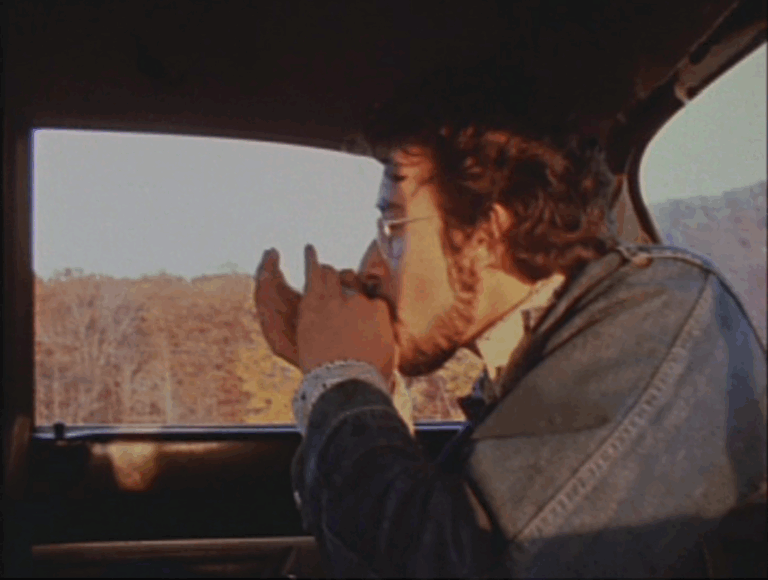
Harmonica (1971) by Larry Gottheim
This concludes the series of continuous shot films, but now with sound. The sound is produced by the car and the people inside it. The car window is both a screen and a plane that separates the inner world from the outside. Shelley, the performer, generates the primary sound when he breaks through that plane. The film is popular because of the vibrant energy of the performer, the music and the autumn landscape, but it is also complex. As with the previous films, I myself am passive. The driver and the car and Shelley are the creative forces. He is the first of many avatars, doubles of me, that appear in many of my films and that became one thread of my later attraction to ceremonial possession. (Larry Gottheim)
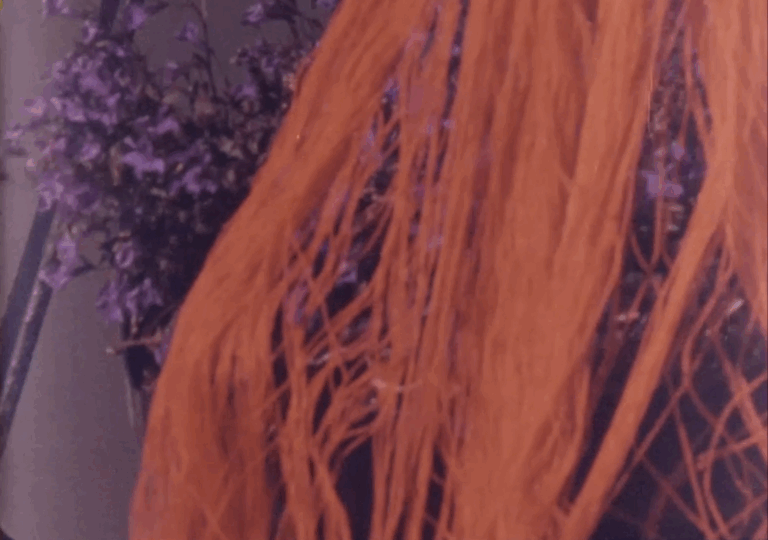
The Red Thread (1987) by Larry Gottheim
Material from a time spent in California at the San Francisco Art Institute. My actual image appears as an ironic avatar of my real filmmaker self. It is challenged by a woman, a weaver with whom I was in a relationship. The mythic references are more than just ironic. Creatures appear. A tribute to women: Clara Schumann, Sally at the piano, Leonora, the cow-herding women of myth. The division into “acts” is a somewhat ironic echo of the formal structures of previous films. The real me, the filmmaker me, is there, for example in the piano passages and above all with the children in the schoolyard, a ceremonial dance. Leonora is connecting the making of this very film to my personal failings. The film itself shows how I transcend those failings. (Larry Gottheim)